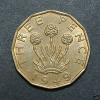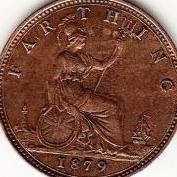A Brief History (and Explanation) of the Coin Grading Scale
When you were going to school and received a grade of 70, that was barely passing. But when a coin receives a grade of 70 from PCGS, NGC, etc. that means it is absolutely perfect. How come?
We have Dr. William Herbert Sheldon, Jr. (1898 - 1977) to blame for that. In 1948, Dr. Sheldon published “Early American Cents” which contained a novel numerical equivalency system for grades, upon which one could supposedly determine the monetary worth of the coins.
In developing his system, Dr. Sheldon was attempting to find multipliers of a base value for each grade, with a coin in “Poor” condition assigned a base value of “1.” Thus a coin in Fair condition was assigned a multiplying value of 2, and was therefore thought to be worth twice the value of a coin in Poor condition. Similarly, Sheldon decided that a Fine coin was worth 12 times the value of a Poor example, and so on up to a perfect Mint State specimen, which Sheldon decided was worth 70 times the value of the same coin in Poor quality. So, actually, the Sheldon numbers were not meant to define the quality of coins—but rather to indicate the dollar-value in various grades.
Using the original Sheldon system, if a particular year and variety of a Large Cent had a retail value of $50 in Poor quality, it should be worth $600 in Fine or $3,500 in perfect MS-70.
Above from Coin World: A Brief History (and Explanation) of the Coin Grading Scale
also interesting:
Sheldon coin grading scale - Wikipedia
 Coinpublications.com
Coinpublications.com





